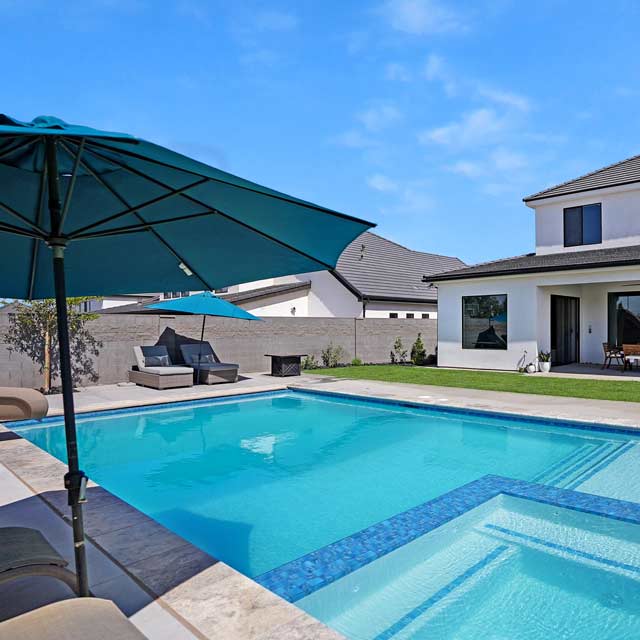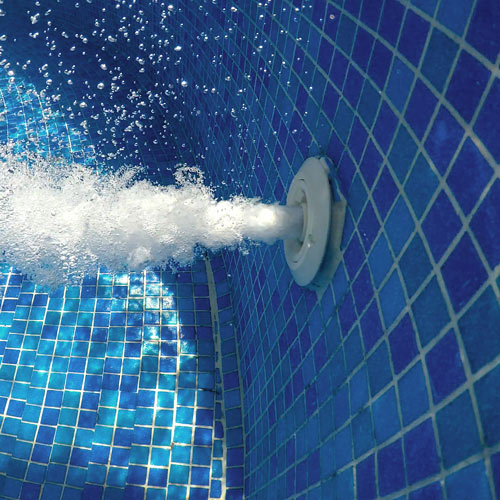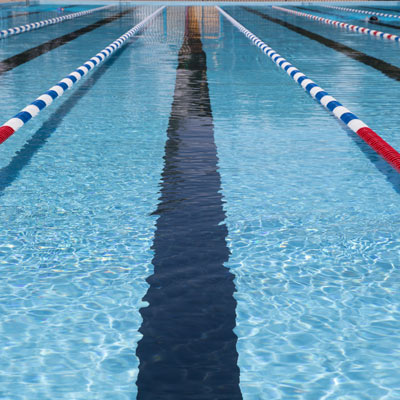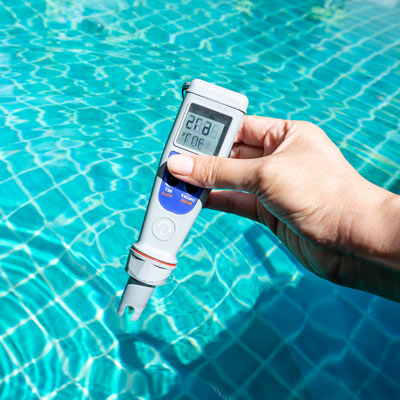Why is my swimming pool water green
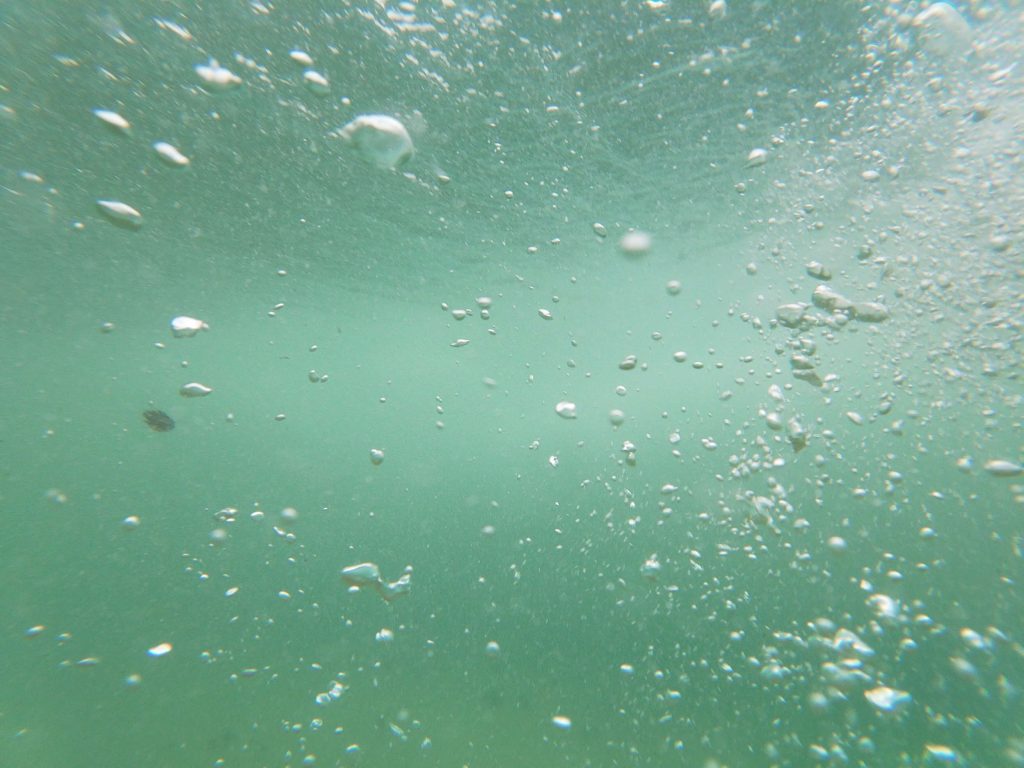
Why is my pool water green? This is the first question that pool owners are going to be asking. If you don’t know what you’re doing with your water chemistry, it’s a foregone conclusion that your water’s going to turn green at some point or another, and you’re going to find yourself asking this question, probably going to the internet first. And so I just want to give you a couple of things that you can look at right away, that could be the source of your green water.
The first and foremost thing that’s going to come to mind is chlorine. Do you have chlorine in your water? If the answer is no, for any reason, then there’s your answer. Your water’s green because you don’t have chlorine in it. As soon as you don’t have chlorine, then you start to have bacteria and algae and things like that growing right away in the water. So 24 hours later or something like that, it would be pretty easy for your water to go green.
Check your Chlorine
And so the obvious answer is you need chlorine, but more specifically, you need a free chlorine count between two to four parts per million. That’s the idea. One part per million in theory is enough to get the job done. What you don’t have very much of is a reserve. What if you get heavy rain or a bunch of people go swimming, something like that? You’re going to drop down to zero. And the goal is, as a pool owner, to not let your chlorine drop to zero. You always want your free chlorine level above zero, ideally two to four parts per million.
So what happens if you have green pool water and you do have a free chlorine level between two to four parts per million? And that’s how you found yourself watching this video. “Why is my water green? Yes, I know I need chlorine. I’ve got chlorine. The water’s still green.” There are, in fact, a number of reasons why this can happen, and this is where it starts to get to just a little more complicated with swimming pool water chemistry, because there are a couple of different things that could result in you having green water, despite the fact that you have a measurable free chlorine value in the water.
The first would be the cyanuric acid level in the water. Now, cyanuric acid is something that you don’t typically deal with day to day with your chemistry, but it is something that all swimming pools need. It is essentially the sunscreen for chlorine. That’s the catchphrase for cyanuric acid. Basically, it’s the thing that allows the chlorine to stay as a residual in your pool, as opposed to just being degraded and burned off by UV. So if you didn’t have any stabilizer or you had zero cyanuric acid in your pool, then your chlorine level’s going to be zero by the end of the day. It doesn’t matter how much chlorine you had in your water. By the end of the day, it’s all going to be gone because the UV is going to degrade it all. And so you establish a cyanuric acid level between 30 to 50 parts per million.
However, if you use stabilized chlorine in your regular, for example, chlorine pucks, what that means, is stabilized, is that there’s cyanuric acid in it. And every time that you add a chlorine puck to the water, then you’re adding more stabilizer to the water. And so if you’re not monitoring that level, which most people don’t regularly, it will slowly climb over time.
And the point at which you get around 80 to a hundred parts per million, and certainly more than that, you’re going to notice that the water will turn green, despite the fact that you have a measurable free chlorine level, and it’s simply because you are entering something called chlorine lock where the cyanuric acid level is so high that the chlorine is just not able to do its job properly. And the truth is that when you get up to 80 or a hundred parts per million or more for cyanuric acid, the chlorine is just largely unable to do its job, like 90% unable to do its job.
So you are left with a situation where you’re measuring a free chlorine level, and yet your water’s still turning green. You don’t know why. Check your cyanuric acid level. If it’s too high, if it’s above 50, 75 parts per million, you need to drain and refill your water to get it back down into that 30 to 50 parts per million range.
And then you need to consider the source of chlorine that you’re using for your pool. Maybe you should consider unstabilized sources of chlorine, where you won’t constantly be adding cyanuric acid to the water. This is very important if you live in an area with water restrictions where you’re just not allowed to drain and refill your pool any old time you want. Then you need to be definitely aware of the sources of cyanuric acid for your pool. But if you’re just an average pool owner, your pool water turned green. I have chlorine. Why? Well, maybe it’s the cyanuric acid level. That’s something I’m going to be checking right away.
But that’s not the end of it. There could be something else, like pH for example. I think we all know that pH is something that you need to balance in swimming pools. However, if your pH level gets too high, the chlorine, again, will be largely unable to do its job. And the point at which that happens is around 8.0 and certainly over 8.2, chlorine is largely unable to do its job.
So you test the water, you have a small free chlorine level of a few parts per million, and yet you have green water. Why is it? What is the pH of the water? It’s entirely likely that your pH is too high, and this would be especially true for something like a saltwater swimming pool. The type of chlorine that a saltwater swimming pool generates has a very high pH. And so it’s always pushing the pH of the water up, and typically speaking, it’s going to be over 8.2 in most saltwater swimming pools, where people are not aggressively taking steps to make sure that they keep their pH down. And so you’ll find that you have a few parts per million or more of chlorine, and yet your water’s always green. You need to check the pH of the water because it could be that your pH is just too high and that your chlorine’s just not able to do its job.
Check your phosphates
So what else could be wrong? A really common thing these days is phosphates. Now, phosphates in your pool water get there from detergents or runoff from fertilizer, things like that. And in essence, phosphates are is it’s like a superfood for the algae in your pool water. And so you’re pouring chlorine in at one end of your pool, and by the other end of the pool, there’s no chlorine left. And it’s just because the algae is growing at such an incredible rate that it’s consuming the chlorine as fast as you can put it in. So you went out there today. You put a whole whack of chlorine in your pool, and tomorrow, it’s all gone again. What’s going on? The pool’s turning green. It could be that you have phosphates.
And so if you are chronically dealing with green water, that’s something that I would check. It’s not something that’s always tested for. If you just use test strips or something like that, it’s not in there. And most water labs don’t test for phosphates unless you ask them to. So it could just be that you have a high level of phosphates.
And it’s significant to note that phosphates are measured in parts per billion. When we deal with swimming pool water, we often deal with the unit of measurement of parts per million. Phosphates are so important that we measure them in parts per billion. And by the time you get 500 parts per billion or more of phosphates in your water, your chlorine is already being readily depleted and you should be considering doing something about it. By the time you get to 1,000 or 2,000 parts per billion or more, your chlorine is just being consumed so readily that your water is green all the time, and it doesn’t matter how much chlorine you use or how fast you poured in. It all gets used up and you got green water the next day again. And so that would definitely be one of the things that I’m thinking about if I’m dealing with chronically green water.
Filtration
And that’s kind of it from a chemicals perspective, what I’m looking at when I’m dealing with a green pool, but there is also the idea of filtration. Filtration is a very important part of keeping your water clean and clear, and it’s something that I would say, typically speaking, pool owners tend to undervalue. The name of the game with pool filtration for the average pool owner is getting away with the minimum number of hours running your pool pump.
I understand pool pumps are expensive. They use a lot of electricity. That being said, there are established standards for this kind of thing, and what it is, is you need to, as the pool owner, pump three times the volume of your pool through the filtration system every day. That is the minimum standard. That will achieve approximately 95% of all of the water in your pool is filtered once every 24 hours.
If you filter your pool in a very lean schedule, or perhaps you have a minimally effective filtration system, then you might not be filtering your water enough. And every last thing that you don’t filter out of your water, now, the chemicals in your water need to try to deal with. And so you could end up using a lot more stuff like chlorine, or you have trouble holding the chlorine level in your water. And if I had chronically green water, I would definitely want to take a look at my filtration schedule and try to come up with some sort of estimation as to how much I’m filtering the water versus how much I should meet that three times the volume of your pool turnover that you should be getting for your pool.
Conclusion
And in total, these are the things that I would do if I was dealing with green water and trying to find the source for it, just start by looking at your chlorine. You need to have it. If you don’t have it, there’s your answer right there. If you do have it, then look at these other parameters, like the pH of the water, the cyanuric acid level, and whether you have phosphates in your water, and probably, you’ll the reason why your pool water turned green somewhere in here.
OUR QUOTE PROCESS
Get started with your pool or spa project in Three Easy Steps!
Schedule a Call
Either give us a call at 435-705-7566 or fill out the form below for a complimentary consultation.
On-Site Design
We’ll work around your schedule, sending our Utah-based custom inground pool designers to make an assessment.
Transparent Quote
Once we understand your project goals and visit your premises, we’ll determine an accurate quote for your custom pool or spa.
Simply fill out the form and a member of our dedicated support team will be in touch.
(We respect your privacy)

